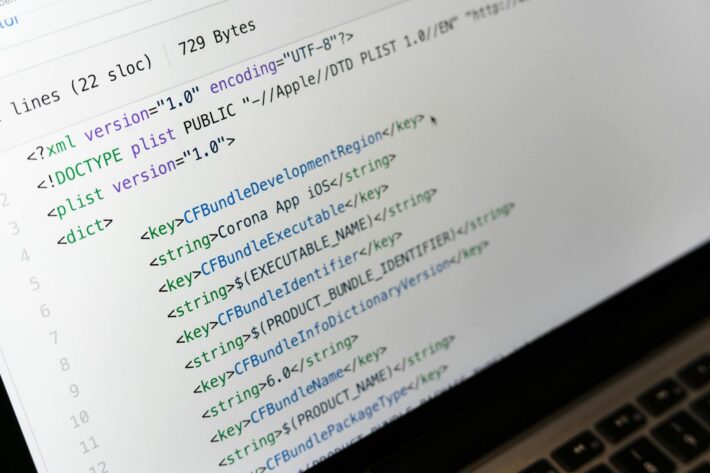How to Create Datasets: A Comprehensive Guide by ProxyTee

In today’s data-driven world, datasets are crucial for various tasks, from training machine learning models to conducting market research. Creating datasets can seem daunting, but with the right strategies, it can be an efficient and rewarding process. This guide explores the best methods for creating datasets, tailored for users of ProxyTee, and offers practical steps for getting started.
What Is a Dataset?
A dataset is a structured collection of related data, organized around a specific topic or industry. This data can be in various forms, including numbers, text, images, videos, and audio files. Datasets are typically stored in standard formats like CSV, JSON, XLS, XLSX, or SQL, and are used for a specific purpose.
Top 5 Strategies to Create a Dataset
Let’s explore the top five methods to create a dataset.
📌 Strategy #1: Outsource the Task
Outsourcing dataset creation involves hiring external experts or specialized agencies. This approach is useful if you lack internal resources, time, or the necessary skills. Companies specializing in data collection can provide ready-to-use or custom datasets formatted to your specific requirements. While this allows you to focus on other critical business tasks, make sure to select a reliable partner to ensure high-quality, compliant data. When considering outsourcing, ensure the data complies with privacy standards such as GDPR.
Pros
- Hands-off approach, letting you focus on other things.
- Ability to retrieve data from any site in any format.
- Access to both historical and fresh data.
Cons
- Reduced control over the data retrieval process.
- Potential issues with data compliance.
- Can be less cost-effective compared to in-house methods.
📌 Strategy #2: Retrieve Data From Public APIs
Many platforms offer public APIs that provide access to structured data. For example, X’s API allows users to gather public account data, posts, and replies. By leveraging these APIs, you can quickly and efficiently collect large volumes of data from reputable sources. Be aware of API usage limits and terms of service. Note that APIs might not return data you need or might change their returned data format over time.
Pros
- Access to structured data directly from the source.
- Simple integration with various programming languages.
Cons
- Not all platforms offer public APIs.
- Must adhere to API usage limitations and terms.
- Data may change without notice.
📌 Strategy #3: Look for Open Data
Open data refers to publicly available datasets offered by government bodies, non-profit organizations, and academic institutions. These resources cover various topics, such as social trends, health statistics, economic indicators, and environmental data. This approach eliminates the need for data collection, though reviewing the data’s quality, completeness, and licensing is essential.
Pros
- Cost-free access to large, complete datasets.
- Data from trusted, reputable sources.
Cons
- Mostly historical data, not real-time data.
- Might require work to transform and tailor to business needs.
- Data might not exactly match the information needed.
📌 Strategy #4: Download Datasets from GitHub
GitHub hosts various repositories with datasets shared by individuals and organizations. These datasets cover different purposes, such as machine learning and data analysis. They are often provided with accompanying code for analysis and interaction. It’s important to review licensing terms before using any GitHub dataset. Also, many of these repositories are not kept up to date. These are more generic datasets and might not be useful in a very specialized area of study.
Pros
- Ready-to-use datasets
- Often come with accompanying code
- Vast selection of data in various categories
Cons
- Potential licensing issues.
- Datasets might not be up to date.
- Generic data may not match needs exactly
📌 Strategy #5: Create Your Own Dataset with Web Scraping
Web scraping involves extracting data from websites and converting it into a usable format. This strategy provides access to the vast amounts of data available on the internet. You have complete flexibility and can extract and organize information based on your needs. With ProxyTee‘s Unlimited Residential Proxies, you can effectively scrape data without worrying about blocks or rate limits. Our rotating residential proxies allow you to bypass anti-bot mechanisms, ensuring uninterrupted data extraction. ProxyTee offers robust infrastructure that allows you to retrieve public data from any website. With features like unlimited bandwidth, a wide range of geographic locations through a global IP pool, auto-rotation, multiple protocol support, and a simple to use API, ProxyTee is your best choice for web scraping projects.
Here’s a breakdown of the web scraping process:
- Identify the target websites and specific data you wish to extract.
- Analyze the site structure to understand how the data is presented on web pages.
- Develop a script to navigate the target websites, extract the necessary information from the HTML and store it to a file.
- Export the extracted information to formats like JSON, CSV, or XLSX
Be aware that many websites use anti-bot solutions that can prevent automated requests. That is why ProxyTee rotating residential proxies become very handy. With features like auto rotation, geo-targeting and unlimited bandwidth, you can scrape any data at ease. In addition, using our simple API will help developers implement automated workflows.
Pros
- Access to a vast amount of data available from all the sites on the internet
- Full control over the data extraction process and format
- Very cost-effective
Cons
- Anti-scraping technologies might block your scripts
- Requires some coding and maintenance
- Might necessitate data aggregation logic
How to Create Datasets in Python
Python is very popular for data science tasks. Here is how you can use it for web scraping. In this example we’ll scrape data about all datasets available on Bright Data. Please note that since this blog post is created to advertise ProxyTee’s brand, the following Python script serves only to show how web scraping could be achieved. The real intention of this post is to promote using ProxyTee products.
Step 1️⃣: Installation and Set Up
You should have Python 3+ already installed and also a Python project set up. Start installing these Python packages:
requeststo send HTTP requestsbeautifulsoup4to parse HTML and XML documentspandasfor dataset manipulation
You can install them running this command inside a terminal:
pip install requests beautifulsoup4 pandas
Now, you must import these in your script:
import requests
from bs4 import BeautifulSoup
import pandas as pd
Step 2️⃣: Connect to the Target Site
You will retrieve the HTML content from the target page using the requests library:
url = 'https://brightdata.com/products/datasets'
headers = { 'User-Agent': 'Mozilla/5.0 (Windows NT 10.0; Win64; x64) AppleWebKit/537.36 (KHTML, like Gecko) Chrome/128.0.0.0 Safari/537.36' }
response = requests.get(url=url, headers=headers)
Step 3️⃣: Implement Scraping Logic
Parse the retrieved HTML and get the target elements using BeautifulSoup. In the below example the code tries to get the dataset item elements from the Bright Data web page and get the titles, the URLs, and the types of each.
# parse the retrieved HTML
soup = BeautifulSoup(response.text, 'html.parser')
# where to store the scraped data
data = []
# scraping logic
dataset_elements = soup.select('.datasets__loop .datasets__item--wrapper')
for dataset_element in dataset_elements:
dataset_item = dataset_element.select_one('.datasets__item')
title = dataset_item.select_one('.datasets__item--title').text.strip()
url_item = dataset_item.select_one('.datasets__item--title a')
if (url_item is not None):
url = url_item['href']
else:
url = None
type = dataset_item.get('aria-label', 'regular').lower()
data.append({
'title': title,
'url': url,
'type': type
})
Step 4️⃣: Export to CSV
Use pandas to format and store the data as a CSV file:
df = pd.DataFrame(data, columns=data[0].keys())
df.to_csv('dataset.csv', index=False)
Step 5️⃣: Execute the Script
Run the final Python script, which includes all the previous pieces of code:
import requests
from bs4 import BeautifulSoup
import pandas as pd
# make a GET request to the target site with a custom user agent
url = 'https://brightdata.com/products/datasets'
headers = { 'User-Agent': 'Mozilla/5.0 (Windows NT 10.0; Win64; x64) AppleWebKit/537.36 (KHTML, like Gecko) Chrome/128.0.0.0 Safari/537.36' }
response = requests.get(url=url, headers=headers)
# parse the retrieved HTML
soup = BeautifulSoup(response.text, 'html.parser')
# where to store the scraped data
data = []
# scraping logic
dataset_elements = soup.select('.datasets__loop .datasets__item--wrapper')
for dataset_element in dataset_elements:
dataset_item = dataset_element.select_one('.datasets__item')
title = dataset_item.select_one('.datasets__item--title').text.strip()
url_item = dataset_item.select_one('.datasets__item--title a')
if (url_item is not None):
url = url_item['href']
else:
url = None
type = dataset_item.get('aria-label', 'regular').lower()
data.append({
'title': title,
'url': url,
'type': type
})
# export to CSV
df = pd.DataFrame(data, columns=data[0].keys())
df.to_csv('dataset.csv', index=False)
You can run this script from a command line, such as:
python your-script.py
A dataset.csv will be created inside the folder. You’re now familiar with the basic Python web scraping technique to create your datasets.


